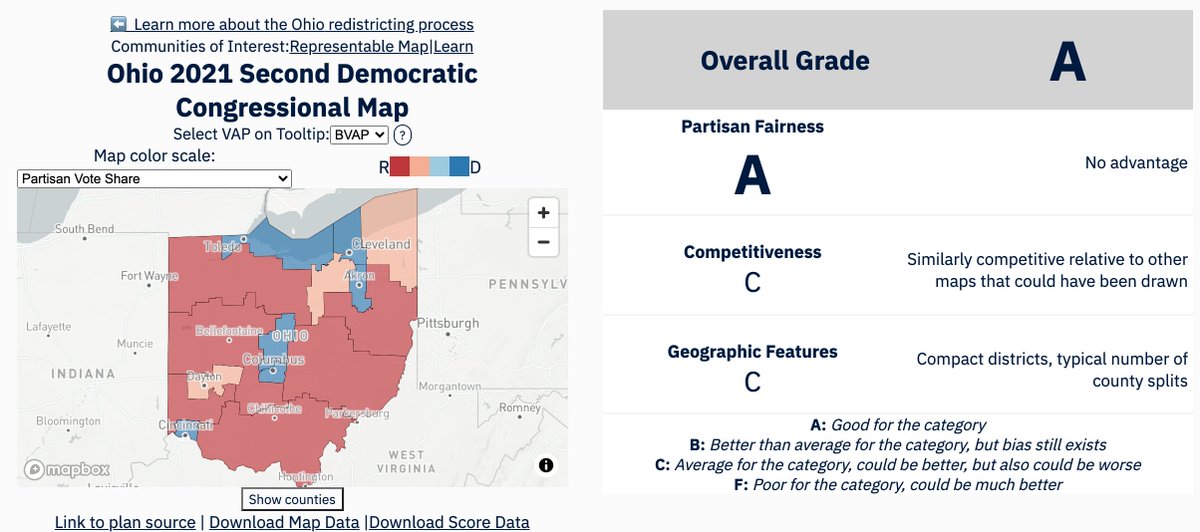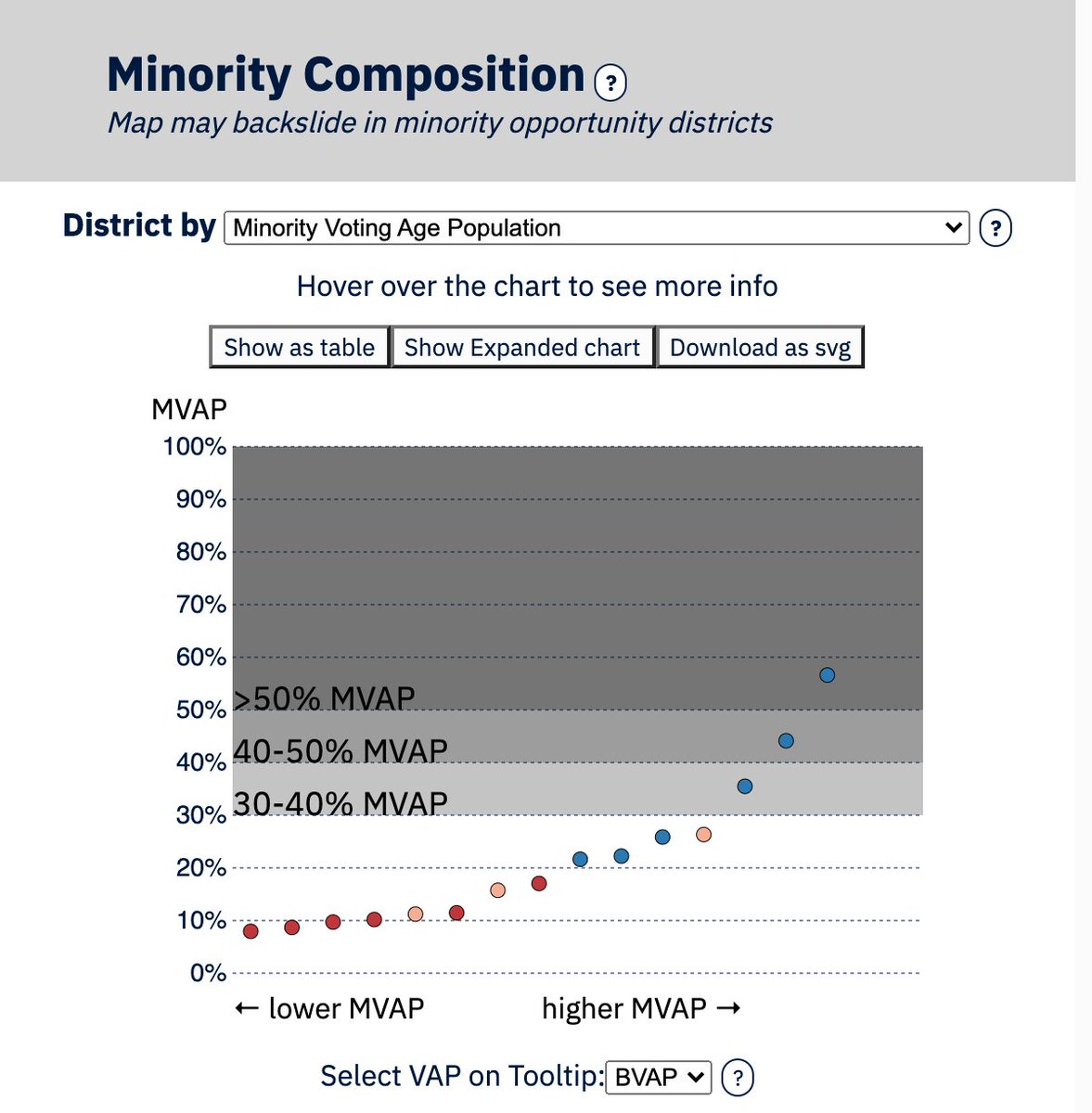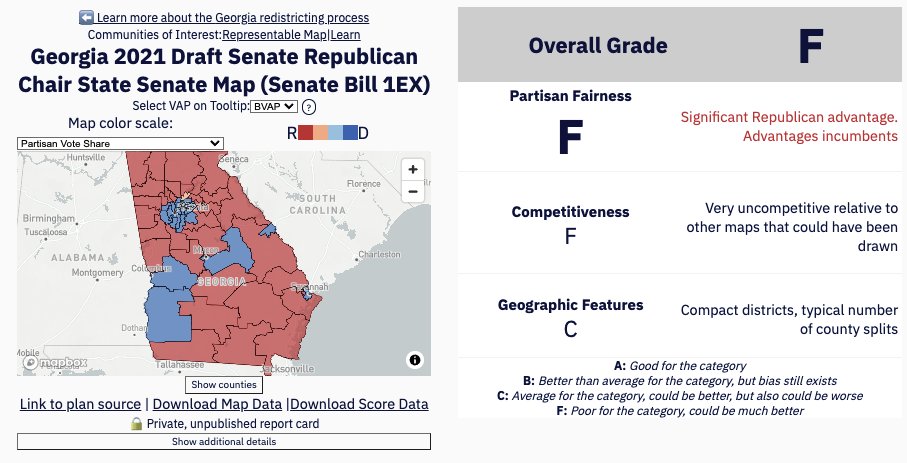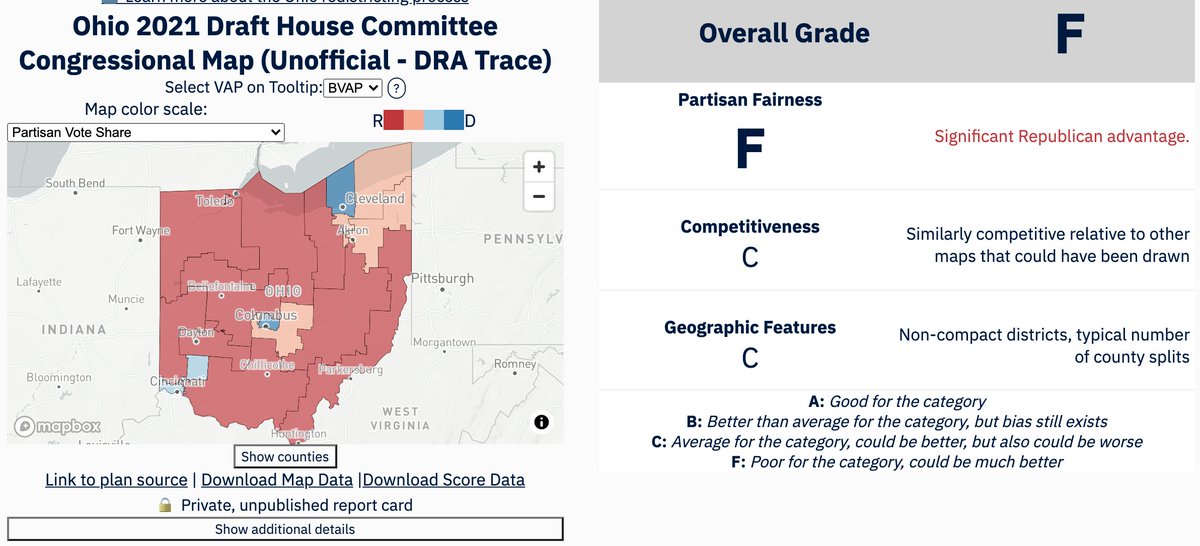
The Michigan Independent Redistricting Commission continues its work, having released several new draft maps for public comment. They will be voting on these maps on December 30, so we encourage Michiganders to speak up about what they like and don't like in these drafts. 

First, the three Congressional drafts.
Apple v. 2: gerrymander.princeton.edu/redistricting-…
Birch v. 2: gerrymander.princeton.edu/redistricting-…
Chestnut: gerrymander.princeton.edu/redistricting-…
Apple v. 2: gerrymander.princeton.edu/redistricting-…
Birch v. 2: gerrymander.princeton.edu/redistricting-…
Chestnut: gerrymander.princeton.edu/redistricting-…
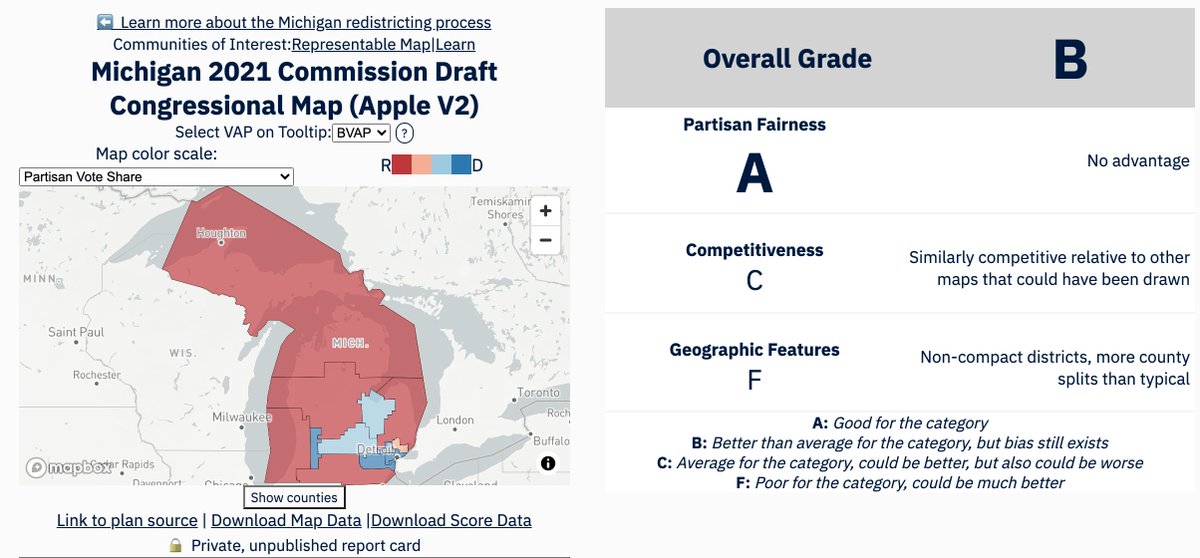
Apple gets a B overall, with an A in Partisan Fairness, a C in competitiveness, and an F in Geography.
Birch and Chestnut get As overall and in Partisan Fairness, with Cs in Competitiveness and Geography.
Birch and Chestnut get As overall and in Partisan Fairness, with Cs in Competitiveness and Geography.

We'd anticipate all three maps electing a 7D-6R delegation, but Chestnut has 5 competitive seats, Birch 4, and Apple 3.
All three maps have 2 districts with a BVAP above 40%.
All three maps have 2 districts with a BVAP above 40%.

Next is the State Senate proposal, Cherry v. 2.
We give it a B overall and in Partisan Fairness, with Cs in Competitiveness and Geography.
We expect it to elect a 21D-17R Senate, which is a slight Democratic advantage. The map has 6 competitive seats.
gerrymander.princeton.edu/redistricting-…
We give it a B overall and in Partisan Fairness, with Cs in Competitiveness and Geography.
We expect it to elect a 21D-17R Senate, which is a slight Democratic advantage. The map has 6 competitive seats.
gerrymander.princeton.edu/redistricting-…

Finally, the State House proposal, Pine v. 5.
We give it a C overall, with a B in Partisan Fairness, a C in Competitiveness, and an F in Geography.
We'd expect it to elect a 59D-51R House, with 21 competitive seats.
gerrymander.princeton.edu/redistricting-…
We give it a C overall, with a B in Partisan Fairness, a C in Competitiveness, and an F in Geography.
We'd expect it to elect a 59D-51R House, with 21 competitive seats.
gerrymander.princeton.edu/redistricting-…

It has 21 seats with a BVAP over 30%, 1 with an HVAP just under 40%, and 1 with an AVAP just under 30%. 

We'd be remiss not to point out that our Report Card does not score the Michigan maps on all of the criteria that the Commission was required to consider. It does not score based on Communities of Interest or compliance with the VRA.
So folks in Michigan - take a moment, speak up about what you'd like to see, and support the Commission in their tremendous work.
#PGP_MI #MIPol #Redistricting #FairMaps
@RedistrictingMI
#PGP_MI #MIPol #Redistricting #FairMaps
@RedistrictingMI
• • •
Missing some Tweet in this thread? You can try to
force a refresh



